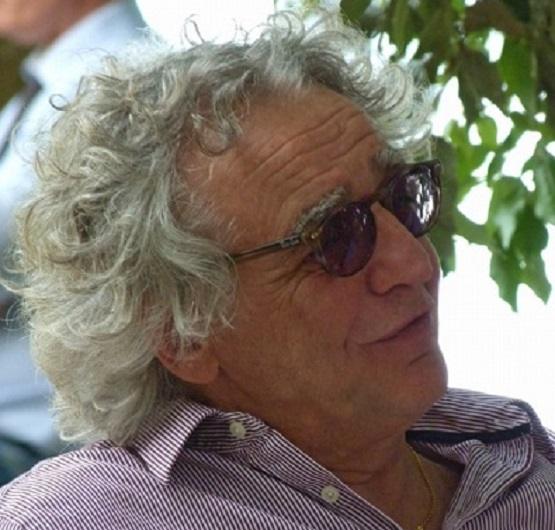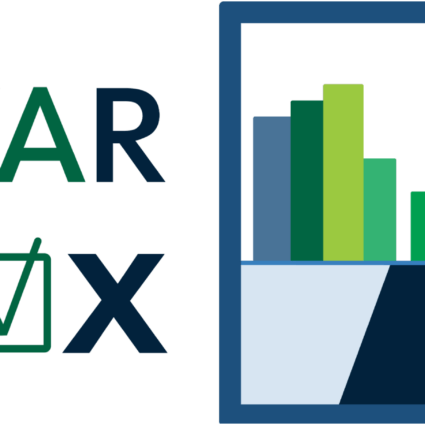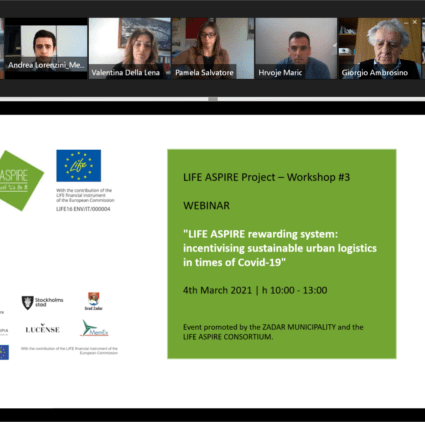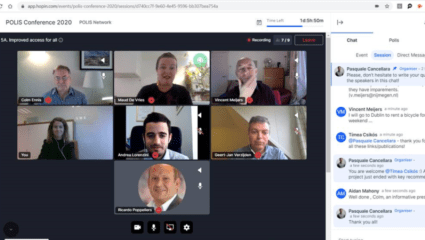News o Progetti // News or Projects
The role of logistics within the smart cities – Interview with Giorgio Ambrosino

1. What current trends in transport, mobility and city logistics would you highlight?
Based on the current experiences implemented in the different cities and on the different acts produced by the European Commission (first of all the 2011 White Paper), the emerging trends for facing the well known problems affecting our cities (motorization rate, traffic congestion, pollution, scarce public transport coverage in time and space, fatalities and induced health diseases, etc) can be summarized as: integration among housing policy and transport planning; enhancement of public transport efficiency and equity based on dedicated and priority bus corridor and feeder services; implementation of green modalities (including pedestrian and bikes) and promotion of “clean” vehicles. The essential prerequisites for this scenario are a strong coordination and interoperability of different mobility services (people and goods), the cooperation among the different actors active on the same network and the integration of data and systems. In parallel, pushed by the current economic crisis (reducing, among other things, the family budget for private cars/mobility) and the latest technology progresses (first of all the “connectivity”), the concept of “shared mobility services” is emerging, based on a “ride sharing” approach (from bikes and car sharing to collective taxi and demand responsive services, such as the most recent forms solutions like UBER, UBER POP, side car Lyft, BlaBla Car, etc) to be integrated in the classic transport services.
2. What role does technology play in this field?
As we can note everyday, the role of the information and communication technologies (ICT) and, in particular, the developments of the last 5 years (big data open architecture, internet of “things”, cloud platform, smart phone and visual graphic interface, UMTS and Wifi network, sensors and location devices, social media, etc.), play a significant role in planning/implementing/managing mobility and transport services. In particular, the latest ICT developments allow: users/citizens (by specific apps) to easily access the services (i.e. from service booking and pre-trips and on trips information, to the provision of assessment feedbacks on the service, etc); Operators to provide more efficient services better tailored on the different citizens needs and area characteristics and to make a continuous real time and on-line control of the services operated; Agencies/Authorities to coordinate different services, monitor contractual KPI and resources and network the different actors. Moreover, these ICT developments also push the realization of new services and schemes as showed, in the last two last years, with the disputed boom of UBER. In any case, I want to stress that the main risk of this “friendly technological period” is to underestimate the complexity of the systems whose implementation should be accompanied by the necessary organization conditions and operation measures. Buying technology does not automatically solve problems, technology is to be used wisely and in an appropriate manner.
3. These approaches, are shared in the field of European projects?
At the level of European projects, the shared solutions and approaches to urban mobility are mainly concentrated in systems and ICT platform (i.e. payment and ticketing), clean vehicles (i.e full electric vehicle) and innovative/green services (i.e. car sharing), city logistics services and service interoperability. However, these issues have seldom been addressed in a rather “holistic way” without a deep analysis and discussion on the practical impacts of the organization and operation dimensions, investment and maintenance costs, regulatory and procurement framework, from the city and regional authority point of view. Furthermore, the main problem that I noticed in the last EU programmes period (but also in the new H2020) is the lack of a specific priority/action dedicated to the Public/Collective issues and solutions. The improvements in urban accessibility and mobility are closely related to the Public Transport services, as demonstrated by the most efficient urban and metropolitan areas in world. Although some steps ahead have been made in this direction (i.e. IEEE programme with Sustainable Urban Mobility Plans or Interreg IVC with the Mobility Agency definition) basic actions are extremely necessary in order to influence the behaviour of Local stakeholders/policy/decision makers and push them to consider Public Transport services as the key tool for supporting urban governance policies from different aspects (economic, accessibility, social cohesion, equity, environment, etc.).
4. In this sense, what European funding programs would you highlight?
First of all I would like to stress that the European Union with its decisions and acts (as the latests WHITE PAPER 2011 and URBAN MOBILITY PACKAGE 2013,) and the funding programmes has played and is still playing a key role in stimulating the city in implementing Sustainable Urban Mobility.
I think that City Authorities should carefully evaluate and decide in which of the different programmes to participate, depending on the decisions and measures already planned in the strategic city plan, in order to avoid to commit human and material resources initiatives that are not able to bring a real and tangible added value to daily city life. For this reason, I believe that City administrators should look for funding opportunities that allow:
– to increase the capability of city technicians to plan and evaluate the different solutions, choose and contract mobility services/systems, control and evaluate contract performances and results;
-to implement solutions/systems/services customized on the city base requirements and objectives acting as “real site demonstration “ and sharing results/experiences with other cities facing similar challenges and problems.
I think that Regional Cooperation Programmes (like INTERREG for which different territorial calls are to be launched this spring) and specific Programmes (such as LIFE) could be more suitable than the H2020 initiative that, in my opinion, is too focused on “holistic” technological solutions, which are distant from the real city needs.
5. In the age of the Smart Cities, is it possible for the cities to improve mobility and logistics, without big investments?
This is not an easy question. First of all I want to underline that a city is “Smart” when it is able to face the problems and to find solutions with a bottom-up multidisciplinary approach (defining objectives and requirements, guarantee the understanding of the solutions and assess the different impacts (including organization/operation). Moreover, I’d like to add that there is no “smart city” in lack of an efficient, equity and consolidated urban transport system. In this context, recognising that urban mobility involves two levels – main axes and diffuse patterns and short trips that need different answers based on PT services – I can propose two measures that, in my opinion, are crucial for increasing the role and quality of bus services and that can be implemented without huge investments but with a “smart “ city approach. These are:
– the set-up of dedicated and priority corridors (BHLs), integration of the relevant bus stops with bike parking or green services for last mile, increase and share of info services and payment tools;
– the establishment of a “Ride sharing centre” by the optimization of the existing offer of feeder services to improve the accessibility of different users categories (elderly and disabled people, people living in isolated hamlets, etc) and the integration with the new ride sharing services by the new ICT devices and service models (i.e. UBERPOP, shared taxi, etc.).
6. What difficulties are currently facing small and medium-sized cities and historic urban centers in the field of urban logistics?
The usual impacts of freight distribution in urban areas are even more important and significant in small and medium size cities in terms of pollution, emissions and costs due to, among other factors, specific characteristics of the city structure (old road infrastructure, narrow streets, etc.), more strict access regulations, presence of heritage and historic assets (with higher risks for pedestrian safety). Moreover, it is also evident that the difficulties that local administrations have in addressing urban logistics are due, on the one hand, to the scepticism of local associations of shop owners (which often operate in self supply provoking more difficulties than the transport operators) and freight operators (which are frequently small local operators) and, on the other hand, to the need of keeping the historic centres active (“Alive”) despite the urban policies in the last two tend to “void” it.
With regard to this situation it is worth noting that a further difficulty, existing also in other mobility sectors (i.e. in the integrated management of parking services and other collective mobility services), is related to the lack of the capability of integrated solutions planning (not only for the city logistics), of managing the process evolution and insufficient structure and skills at single municipality level..
7. What relevance and results offered the ENCLOSE European project in the field of freight distribution and urban logistics?
The ENCLOSE project, funded by the Intelligent Energy Europe programme, faced the different critical aspects mentioned above from the perspective of Local Authorities/Municipalities (including 9 European Cities), by “simply” (but not always known) recognizing that the small and medium size towns in Europe are more than 1350 (vs 21 cities with over 1 ml of inhabitants) and they need specific solutions and approaches that have not been addressed by the recent large European projects and EU Commission acts, which are on the contrary all focused on big urban realities. For this reason, ENCLOSE project acted on different levels with specific results related to :
– Implementation and operation of pilot Services in the three “forerunner” towns – Lucca, Trondheim and ‘s-Hertogenbosch – where advanced logistics solutions already existed and Soft measures, with the related impacts evaluation, in the 6 “follower” towns of Burgos, Almada, Dundee, AlbaIulia, Serres, Balchik;
– Knowledge and experience exchanges among the different ENCLOSE cities with the production of a portfolio collecting different training courses materials, specifically addressed to the technicians of Local Authorities and stakeholders;
– Definition and evaluation of Feasibility Studies and Sustainable Urban Logistic Plans in the 9 ENCLOSE towns.
However, the most crucial result of ENCLOSE was, in my opinion, the definition of a common methodology and guidelines for developing local Sustainable Urban Logistics Plans, to be integrated in the relevant SUMP as one of the core components. SULP methodology – which was endorsed by most of the city stakeholders involved in ENCLOSE and got very positive feedbacks from non-ENCLOSE cities and institutions – is intended to support the policy-makers and stakeholders of the different European towns in analyzing specific local needs and evaluating the possible solutions, in the framework of the Sustainable Urban Mobility Plan.
All the results and products of ENCLOSE are available on project web-site (www.enclose.eu).





